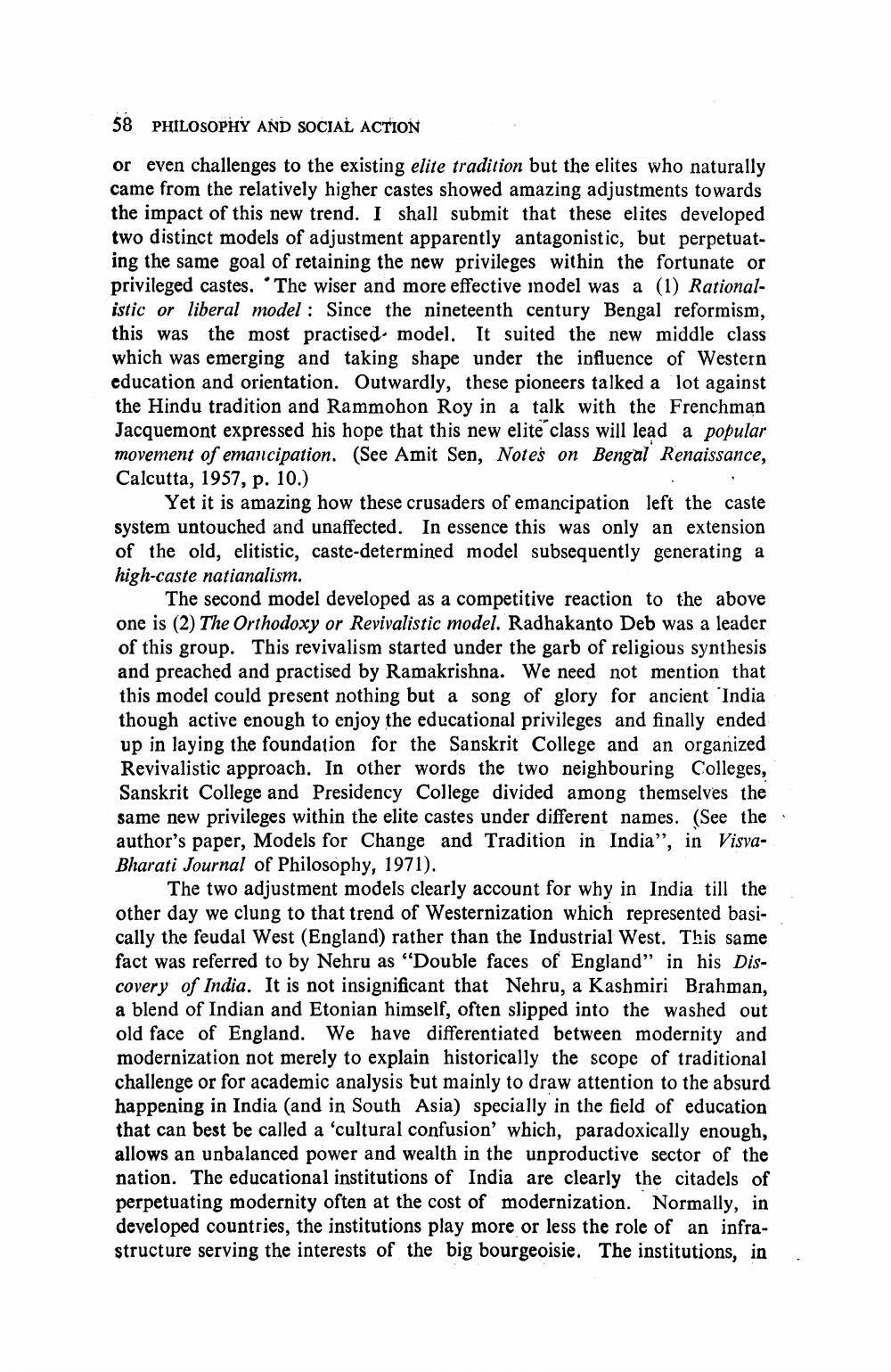________________
58 PHILOSOPHY AND SOCIAL ACTION
or even challenges to the existing elite tradition but the elites who naturally came from the relatively higher castes showed amazing adjustments towards the impact of this new trend. I shall submit that these elites developed two distinct models of adjustment apparently antagonistic, but perpetuating the same goal of retaining the new privileges within the fortunate or privileged castes. 'The wiser and more effective model was a (1) Rationalistic or liberal model : Since the nineteenth century Bengal reformism, this was the most practised model. It suited the new middle class which was emerging and taking shape under the influence of Western education and orientation. Outwardly, these pioneers talked a lot against the Hindu tradition and Rammohon Roy in a talk with the Frenchman Jacquemont expressed his hope that this new elite class will lead a popular movement of emancipation. (See Amit Sen, Notes on Bengal Renaissance, Calcutta, 1957, p. 10.)
Yet it is amazing how these crusaders of emancipation left the caste system untouched and unaffected. In essence this was only an extension of the old, elitistic, caste-determined model subsequently generating a high-caste natianalism.
The second model developed as a competitive reaction to the above one is (2) The Orthodoxy or Revivalistic model. Radhakanto Deb was a leader of this group. This revivalism started under the garb of religious synthesis and preached and practised by Ramakrishna. We need not mention that this model could present nothing but a song of glory for ancient India though active enough to enjoy the educational privileges and finally ended up in laying the foundation for the Sanskrit College and an organized Revivalistic approach. In other words the two neighbouring Colleges, Sanskrit College and Presidency College divided among themselves the same new privileges within the elite castes under different names. (See the author's paper, Models for Change and Tradition in India", in VisvaBharati Journal of Philosophy, 1971).
The two adjustment models clearly account for why in India till the other day we clung to that trend of Westernization which represented basically the feudal West (England) rather than the Industrial West. This same fact was referred to by Nehru as "Double faces of England" in his Discovery of India. It is not insignificant that Nehru, a Kashmiri Brahman, a blend of Indian and Etonian himself, often slipped into the washed out old face of England. We have differentiated between modernity and modernization not merely to explain historically the scope of traditional challenge or for academic analysis tut mainly to draw attention to the absurd happening in India (and in South Asia) specially in the field of education that can best be called a 'cultural confusion' which, paradoxically enough, allows an unbalanced power and wealth in the unproductive sector of the nation. The educational institutions of India are clearly the citadels of perpetuating modernity often at the cost of modernization. Normally, in developed countries, the institutions play more or less the role of an infrastructure serving the interests of the big bourgeoisie. The institutions, in
.




